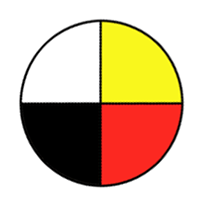Observe, illustrate, and analyze living organisms within local ecosystems as part of interconnected food webs, populations, and communities.
SI
| (a) |
Illustrate the ecological organization of life within the biosphere, using specific examples of species, populations, communities, ecosystems, and biomes. |
| (b) |
Provide examples of ecosystems of varying sizes and locations, including their biotic and abiotic components. |
| (c) |
Conduct a field study to observe, record (using sketches, notes, tables, photographs, and/or video recordings), and identify biotic and abiotic components of a local ecosystem. |
| (d) |
Show respect for all forms of life when examining ecosystems. |
| (e) |
Examine the biotic and abiotic components of distant ecosystems using photographs, videos, or online resources. |
| (f) |
Choose and use appropriate instruments (e.g., magnifying glass, thermometer, light meter, hand-held microscope, and digital camera) safely, effectively, and accurately to observe and illustrate biotic and abiotic components of ecosystems. |
| (g) |
Compile and display ecological data to illustrate the various interactions that occur among biotic and abiotic components of ecosystems. |
| (h) |
Identify strengths and weaknesses of different methods of collecting and displaying ecological data (e.g., compare field observations of an ecosystem with observations from a video or television program, compare a food chain with a food web). |
| (i) |
Classify organisms in a variety of ecosystems as producers, consumers, or decomposers and further classify consumers as herbivores, carnivores, or omnivores. |
| (j) |
Interpret interdependence within natural systems by constructing food chains and food webs to illustrate the interactions among producers, consumers, and decomposers in a particular ecosystem. |
| (k) |
Construct a classification key, using appropriate scientific terminology, which will enable classmates to differentiate between producers, consumers, and decomposers. |
| (l) |
Provide examples of organizations in Canada that support scientific research related to ecosystems (e.g., environmental conservation groups, federal and provincial government departments, agricultural and marine institutes, universities, and colleges). |


Project WILD activity guides are free to teachers who attend a Project WILD workshop. These workshops provide an opportunity to experience the activities and to actively plan how to use them in the classroom. A modest registration fee will cover workshop materials and expenses.

Below Zero activity guides are free to teachers attending a Below Zero workshop, often offered in conjunction with Project WILD workshops. These workshops provide an opportunity to experience the activities and to plan how to use them in the classroom. A modest registration fee covers workshop materials and expenses.




























Each binder contains suggested teaching ideas, student activities and key terminology. Extra features of the DVD include indexes, labelled slides, glossary, animations, English subtitles and an iMovie project.













Teachers should select portions of the program that relate directly to specific learning outcomes.


Teachers may wish to use other programs from the Biomes of the World in Action series. Program titles include Coniferous Forest, Deciduous Forests, Deserts, Freshwater Ecosystems, Marine Ecosystems, Rainforest Biomes and Tundra.







Microbiology gives us insight into the part played by bacteria, yeasts and fungi. Biochemistry reveals how the chemical processes in living organisms cause change. Entymology reveals the vital role of insects in the great cycle of decay. The video also explores the incredible science behind preservation, from new food packaging and chemical additives to UV radiation and osmotic pressures.

The book was compiled by and co-published with Saskatchewan Environment and Resource Management.













